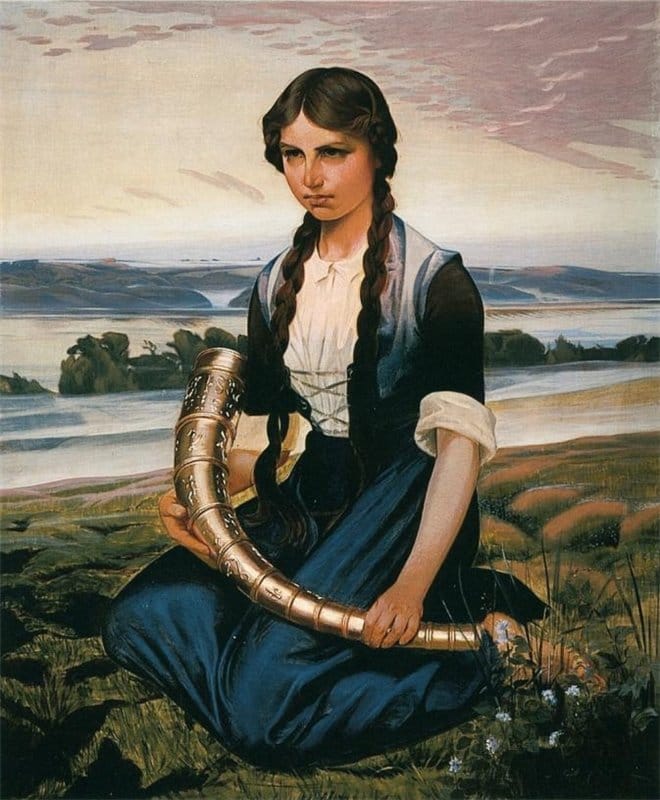Historic Painting: “The Girl Who Found The Golden Horn” by Harald Slott-Møller, 1906.
This painting commemorates the discovery, in 1639, of one of the world's great Iron Age art treasures, sadly now lost to history.

Sorry for my lapse in posting lately, but to return to the fold I thought I'd do a Historic Painting since I haven't done that for a while. This striking picture is eye-catching in its own right, but it also has a very interesting historical story behind it. The painting depicts a Danish girl named Kirsten Svendsdatter, who, while walking in a field near the village of Gallehus, Denmark on July 20, 1639, noticed something dull and gleaming sticking out of the ground. She went to investigate, dug a bit and uncovered a magnificent gilded horn dating from the Iron Age, about the early 5th century CE. She wrote about her discovery to King Christian IV of Denmark, and ultimately the horn became the property of the Danish royal family.
Amazingly, a second horn was discovered just a few feet away in April 1734. Together, the Golden Horns of Gallehus represented an amazing set of artifacts from an era that left very few traces behind. Covered with runes and patterns illustrating various mythological figures, the horns were a priceless treasure of a vanished age.
Sadly, they do not exist anymore. In 1802 a metal scavenger and con artist stole the horns and melted them down for the gold. The thief, Niels Heidenreich, was caught and ultimately spent nearly 40 years in prison for the crime. The Golden Horns of Gallehus remain among the most tantalizing of the world’s lost art treasures, although copies of them have been made in modern times.
This painting was created in 1906 by Harald Slott-Møller, who painted a number of idyllic landscapes with human figures, some mythological and Biblical scenes, and, like this one, pictures that evoked the Danish past or cultural tradition. His work is quite beautiful and it’s a shame he’s not more well-known outside of Denmark. He died in 1937. The original of this picture is in a museum in Haderslev, Denmark.
The Value Proposition
Why should you be reading this blog, or receiving it as a newsletter? This is why.
☕ If you appreciate what I do, buy me a virtual coffee from time-to-time to support my work. I know it seems small, but it truly helps.
📖 You could also buy my newest book.
🎓 Like learning? Find out what courses I’m currently offering at my website.
📽 More the visual type? Here is my YouTube channel with tons of free history videos.



Comments ()